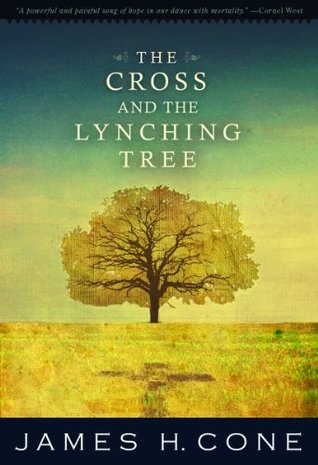More on this book
Community
Kindle Notes & Highlights
To the memory of Black People whose lives were lost on the Lynching Tree
The cross and the lynching tree are separated by nearly 2,000 years. One is the universal
symbol of Christian faith; the other is the quintessential symbol of black oppression in America.
Despite the obvious similarities between Jesus’ death on a cross and the death of thousands of black men and women strung up to die on a lamppost or tree, relatively few people, apart from black poets, novelists, and other reality-seeing artists, have explored the symbolic connections.
this symbol of salvation has been detached from any reference to the ongoing suffering and oppression of human beings—those whom Ignacio Ellacuría, the Salvadoran martyr, called “the crucified peoples
The cross has been transformed into a harmless, non-offensive ornament that Christians wear around their necks.
Until we can see the cross and the lynching tree together, until we can identify Christ with a “recrucified” black body hanging from a lynching tree, there can be no genuine understanding of Christian identity in America, and no deliverance from the brutal legacy of slavery and white supremacy.
how to reconcile the gospel message of liberation with the reality of black oppression.
How could I find meaning in a world that ignored black people? I decided that I had to say something about that contradiction.
Just as I could not separate Martin from Malcolm, neither could I separate my Christian identity from my blackness. I was black before I was Christian.
The lynching tree was the most horrifying symbol of white supremacy in black life. It
Despite such terror, however, blacks did not let lynching completely squeeze the joy out of their lives.
The more black people struggled against white supremacy, the more they found
in the cross the spiritual power to resist the violence they so often suffered.
As Jacob, the God-wrestler, received a new name to reflect his new self, black people’s struggle with God in white America also left a deep and lasting wound.
Blacks did not embrace the cross, however, without experiencing the profound contradictions that slavery, segregation, and lynching posed for their
The crucifixion of Jesus by the Romans in Jerusalem and the lynching of blacks by whites in the United States are so amazingly similar that one wonders what blocks the American Christian imagination from seeing the connection.[4]
Like the lynching tree in America, the cross in the time of Jesus was the most “barbaric form of execution of the utmost cruelty,” the absolute opposite of human
value systems.
Suffering always poses the deepest test of
faith, radically challenging its authenticity and meaning.
What we do know is that her spirit of resistance caught fire in black communities throughout the nation, justifying the claim of author Clenora Hudson-Weems that Emmett Till was “the sacrificial lamb of the civil rights movement.”[12]
Hegelian
At no time was Martin King more aware of the threats on his life than when he made the decision to go to Memphis to march with striking sanitation workers. Theologian John Macquarrie is among those
He did not go to Memphis to die, but in the hope he could help change people’s minds there.
Both lynching and Christianity were so much a part of the daily reality of American society that no black artist could avoid wrestling with their meanings and their symbolic relationship to each other.
Soon after Allen’s Without Sanctuary was published, the U.S. Senate issued a historic apology to the “families of more than 5,000 lynching victims across the country for its failure to enact an anti-lynching law first proposed 105 years
times, but it was always defeated in the Senate, whose members, especially in the South, insisted that lynching was a necessary tool to protect the purity of the white race.
The lynching tree is a metaphor for white America’s crucifixion of black people.


